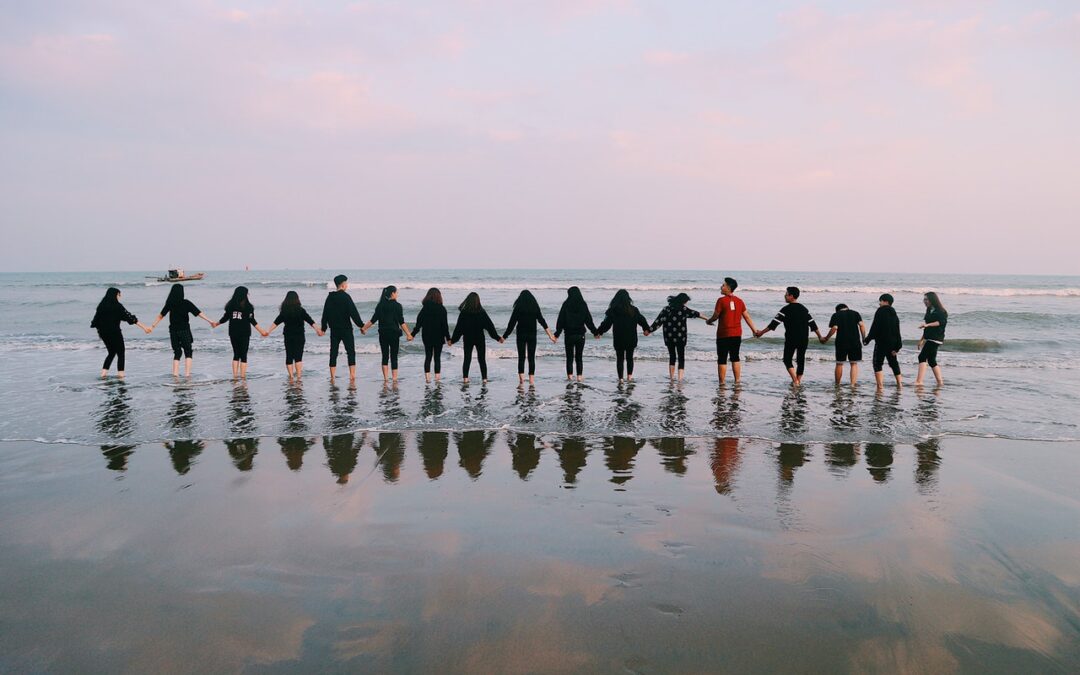
Design Thinking Rooted in Empathy Enables Innovation
Design Thinking Rooted in Empathy Enables Innovation
To have empathy means to have the ability to understand the needs of others by becoming aware of their feelings and thoughts.
Design Thinking is a process for solving problems and enabling innovation by prioritizing people’s needs above all else. It relies on observing, with empathy, how people interact with their environments, and employs an iterative, hands-on approach to creating solutions.
Design Thinking is an operating approach that faces and solves the demanding situations and issues that stand up in groups primarily based totally on creativity, multidisciplinary teamwork, and empathy.
This exclusive, experimental, and holistic technique can enable an upward push to what all companies want: Innovation.
According to experts, its beginning dates to 1919, while the German architect Walter Gropius created the Bauhaus faculty of crafts, layout, artwork, and architecture. The faculty started to set up several dynamics which might be used nowadays in Design Thinking, including teamwork, the removal of hierarchies and the alignment to person desires.
The method became advanced at theoretical stage in the 70s, at Stanford University (California), and many years later in 1991, the North American consultancy IDEO, gave it a very lasting place among multidisciplinary groups — professors, lawyers, engineers and, consequently laying the rules of contemporary-day Design Thinking.
The Root: Empathy
Empathy is a right-brain activity, which instigates people to think that it is a discipline associated with being touchy-feely. However, empathy is currency.
“Empathy at its core is a very valued virtue and emotional intelligence currency.”
Empathy enables you to think about how people feel and helps you understand a problem by putting yourself in someone else’s shoes.
Empathy is one of the best virtues to have as a leader of an organization or a group of people dedicated to achieving any cause, but it’s not exclusively valuable just to leaders.
“Empathy is listening to what others have to say, but also interpreting and feeling what is being said.”
You do this by paying attention to the tone and the emotions of the other person and internalizing them.
For organizations seeking to be innovative and better aligned with their customer needs, a strong dose of empathy across teams will be a strong starting point.
“What most people are looking for aren’t answers with smart solutions to their problems, they are seeking to be understood, and validated first.”
Empathy and Self-awareness
Before a problem comes up, so does the solution and the process to solve it.
Life experiences can often shape how we perceive ourselves as a piece of the puzzle and how we fit in the bigger picture called humanity.
We can’t see how all the pieces DO FIT TOGETHER, when we are fragmented within ourselves.
Fragmentation outside of us (chaos), is because of the fragmentation within ourselves (internal conflict).
How does one break free of internal conflicts that get in the way of achieving empathy?
You must be willing to see and re-trace where the fragmentation started.
The purpose of becoming fully self-aware is so you can understand how to put the pieces together based on reality. It’s not work you can do alone.
Work with a friend, a mentor, a coach, a therapist… someone you trust to help you see aspects of yourself that are blocked.
I often hear people talk about being afraid to be vulnerable as a defense mechanism. Often all we are doing is keeping ourselves locked into a mind prison.
“You can’t be bold and play life in a big way without being vulnerable.”
To achieve anything in life, you must be willing to give all you have to it and shift your narrative from being attached to the outcomes, to finding joy in the process.
“The fun of a puzzle is the challenge in putting together all the pieces.”
By detaching from the outcomes, we can focus on giving for the sake of giving. We can find joy in the state of giving more, and in the journey. This vulnerable state of being opens your heart.
“An open heart activates empathy.”
Heart Centered Innovation
We won’t be able to solve the problems of the future with the same kind of thinking of the past.
“To solve the new problems of today, we need new kind of innovation in Design Thinking.”
Design Thinking is a large part of innovation that we need to bring into our everyday mindsets.
This will allow us to engage in collaborative work by having a human-centered perspective towards what is needed to truly drive innovation.
Design Thinking is best suited to addressing problems by applying multiple dimensions to them, not singular views of one way or the other as we are experiencing today, especially in the political theater.
They are also most effective at the intersection of business and society, logic and emotion, human needs and economic requirements, rational and creative beings and between systems and individuals.
Design Thinking cannot be understood as a process that can solve a set-in-stone collection of problems that someone finds in front of them. It is rather a mindset towards approaching problems.
This mindset can be applied to almost any scenario where empathy towards people is the most crucial aspect of designing innovative solutions.
We as humans seek products, services, and organizations that we feel personally connect with.
These meaningful connections help us become more capable to get up and put in a productive day of work.
“With the right mindset, we can tackle any problem with innovation in Design Thinking.”
We must make sure that the thinking we design helps us focus on a human-centric approach to problem solving, making sure that the solutions designed are incorporating creativity as well as logic, but above all empathy.





Recent Comments